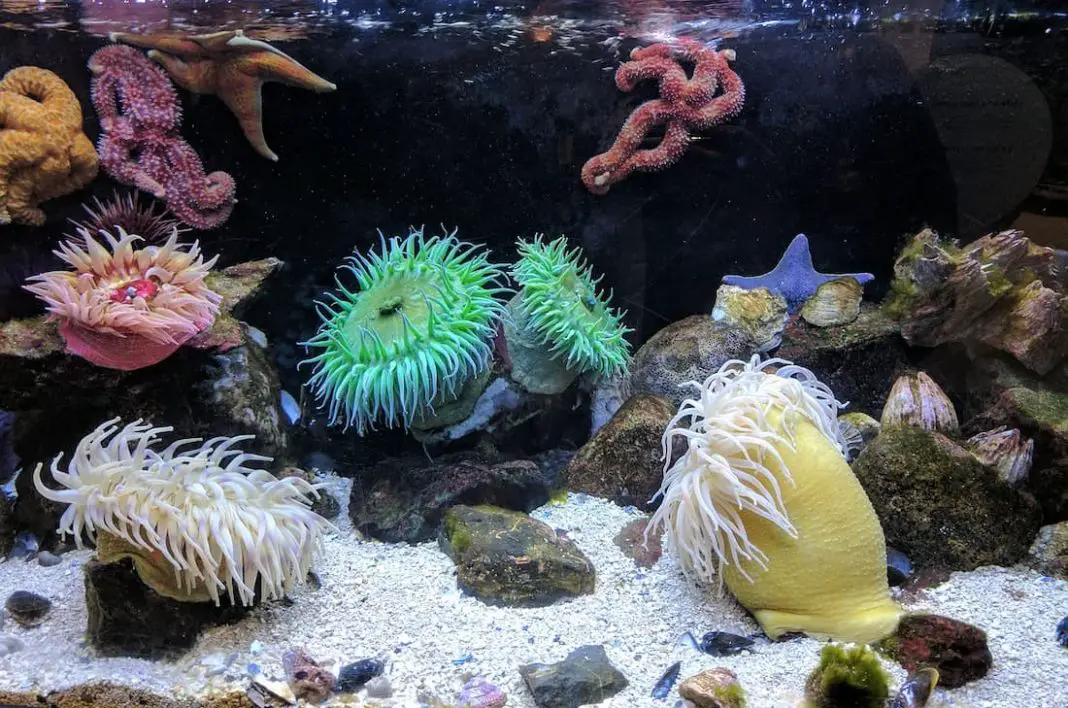Do Anemones Sting Humans?
The short answer is yes, anemones can sting you. The reason why an anemone may sting a human is that they possess stinging cells called nematocysts. As soon as an aquarium fish, invertebrate, or a person happens to graze the surface of an anemone with their hand, would cause thousands of these stinging cells pierce the victim’s outer coverings. Although for most fish, it can be life-threatening, for humans it can usually go unnoticed depending on the species that stung. Sometimes, for humans, it can just appear that the anemone is sticking to you.
So, the majority of physical encounters with an anemone usually end without pain. Believe it or not, there are aquarium owners who play with their anemones to some extent or even hand-feed them. When you’re first introducing an anemone to an aquarium, you have to handle it, at least at the beginning.
Beware Of The Hell’s Fire Anemone!
The Hell’s Fire Anemone is a ‘stinging sea anemone’. These anemones are named ‘stinging sea anemones’ due to their capacity to cause nasty stings for humans.
Although all anemones have stinging cells, the Hell’s Fire Anemone has a dangerous sting that’s known to be extremely powerful and painful. They are known for their toxin, which is so potent, that they’re known to even sting fish to eat. Another similar anemone from this group is the Bali Fire Anemone.
Getting a Hell’s Fire Anemone for your tank, or any of the other ‘stinging sea anemones,’ should be made with enough knowledge to protect yourself. They have a very different look from anything else that’s typically sold for a tank. They’re very poisonous and their sting is very painful. Aquarists should be warned and should consider wearing gloves when handling this anemone. The sting from this group of anemones can damage and even kill other corals. It’s recommended to keep them in a species-specific tank which will help them thrive better.
What To Do If You’re Stung By A Sea Anemone?
Although the majority of anemone bites are harmless, there are some anemones that can be poisonous to humans. There are some anemone species that produce a sting, which can result in getting unwanted symptoms that can range from mild and severe depending on the amount of venom injected.
Symptoms Of An Anemone Sting
- The severity of symptoms from an anemone sting can depend on
- Type of species of the anemone
- Amount of the toxin that’s been injected
- The body’s reaction to the sting
Some of the more common symptoms of an anemone sting include cuts and wounds on the affected areas. Rashes are common and can be seen on the skin. It can also make hives on the skin that can turn into blisters. Severe pain, itchiness, and swelling in the area are other common symptoms.
Some of the more severe symptoms from a sea anemone sting often need immediate treatment including difficulty in breathing, severe pain in the chest, rapid heartbeat, and sweating.
Treating An Anemone Sting
The treatment options for sea anemone sting include removing the sting and treating the wound.
The first treatment for a sea anemone sting is to remove the sting/spine very carefully, which will need plugging out using a pair of tweezers. It’s important to note that the spines shouldn’t break while pulling it out. After the affected site is cleaned with salt water and seawater. Sand can be used to rub wounds and detach the stingers. Once the spine or multiple spines are removed, the affected area will need to be thoroughly washed with an antibacterial liquid. The wound should be left uncovered for better healing, which permits the embedded spines to resurface.
How To Avoid Getting Stung By An Anemone
These points should be taken into consideration for preventing a sea anemone sting.
- Pay attention to any warnings, precautions of lifeguards at the beach
- Avoid touching marine animals or plants
- If you want to swim in areas that could be affected, wear protective clothing
- Consider wearing protective footwear
- Be aware and conscious of the waters you’re in
- If you need to remove stingers from the body, try wearing protective covers such as hand gloves
- Avoid rubbing the affected area with your bare hand
It’s recommended to use some safety precautions while cleaning a marine aquarium, and use gloves. The reason is that even a simple and soft touch of a sea anemone can trigger the harpoon and sting.








